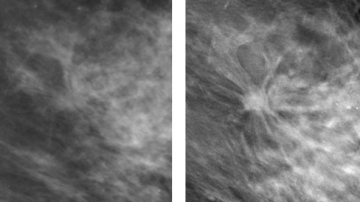LONDON (AP) ? Evidence that Germany's economy contracted in the last three months of 2012 hurt global stock markets on Tuesday, offsetting more upbeat U.S. figures showing retail sales rose during the holiday month of December.
Germany's main stock index, the DAX, fell 0.7 percent to close at 7,675.91 after the government said the economy grew only 0.7 percent in 2012, which indicates activity dropped in the last three months of the year by as much as 0.5 percent. The government did not break out the quarterly figure.
The figures show the European financial crisis is weighing down even the strongest economies on the continent. Analysts, however, say the country is unlikely to fall into recession, defined as two consecutive quarters of economic contraction.
"The German economy will continue to steer its course this year ? despite a very weak year-end 2012," said Andreas Rees, chief German economist at UniCredit.
Elsewhere in Europe, Britain's FTSE 100 closed 0.2 percent higher at 6,117.31 while France's CAC-40 lost 0.3 percent to 3,697.35.
Wall Street traded lower, with the Dow shedding 0.1 percent to 13,500.36 and the broader S&P 500 losing 0.1 percent to 1,469.17 after a report showed retail sales rose 0.5 percent in December from the previous month.
The increase shows the drawn-out "fiscal cliff" debate in the U.S. had little impact on consumer spending. A series of tax hikes and spending cuts, due to come into effect Jan. 1, were only averted by a last-minute deal. The positive effect of the figures on market sentiment was not strong enough, however, to bring stock indexes into positive territory.
Earlier in Tokyo, the Nikkei 225 rose 0.7 percent to finish at 10,879.08, its highest close in nearly three years, after Masaaki Shirakawa, governor of Japan's central bank, pledged to take action to combat the country's deflationary slump.
In a boost for Japanese exporters, the yen has slid against the U.S. dollar and euro since the Liberal Democratic Party returned to power in national elections last month. Its leader, Shinzo Abe, has been lobbying the central bank for aggressive action to end Japan's years of deflation, demanding that it meet an inflation target of about 2 percent.
In announcing a 20 trillion yen ($225 billion) economic stimulus package last Friday, Abe reiterated his calls for the Bank of Japan to do more to boost growth.
Monetary stimulus programs in major economies have helped buoy stock markets over the past year and Federal Reserve Chairman Ben Bernanke was careful this week not to suggest his own central bank's efforts were ending.
In a speech in the U.S. on Monday, Bernanke made no mention of winding down the Fed's bond-buying program, dubbed quantitative easing, even though some Fed officials recently said they favor doing that.
The Fed has been buying $85 billion a month in Treasurys and mortgage bonds to try to keep borrowing costs low and encourage more spending.
Analysts at Credit Agricole CIB said markets found some relief in Bernanke's speech as it did not repeat the views of some Fed officials in hinting at an early ending of quantitative easing.
Looking ahead, investors will on Friday assess a slew of data for signs of growth in China, the world's second-largest economy. China will issue fourth-quarter growth data for 2012 as well as GDP growth for the year. Factory output, investment and retail sales will also be released.
Elsewhere in Asia, Australia's S&P/ASX 200 fell 0.1 percent to 4,716.60 and South Korea's Kospi dropped 1.1 percent to 1,986. Hong Kong's Hang Seng shed 0.1 percent to 23,381.51.
Benchmarks in Indonesia, mainland China and New Zealand rose while the Philippines, Taiwan and Singapore fell.
Benchmark oil for February delivery was down 41 cents to $93.73 per barrel in electronic trading on the New York Mercantile Exchange.
In currencies, the euro fell to $1.3342 from $1.3378 late Monday in New York. The dollar fell against the Japanese yen to 88.69 yen from 89.41 yen.
___
Pamela Sampson in Bangkok contributed to this report.
Source: http://news.yahoo.com/german-economic-woes-erode-market-gains-114932735--finance.html
Karlie Redd guild wars 2 adrian gonzalez Jerry Nelson Foo Canoodle Isaac path







9(MDAzNTYzNDk2MDEyNDM5NTU1OTc1NDZmZQ001))